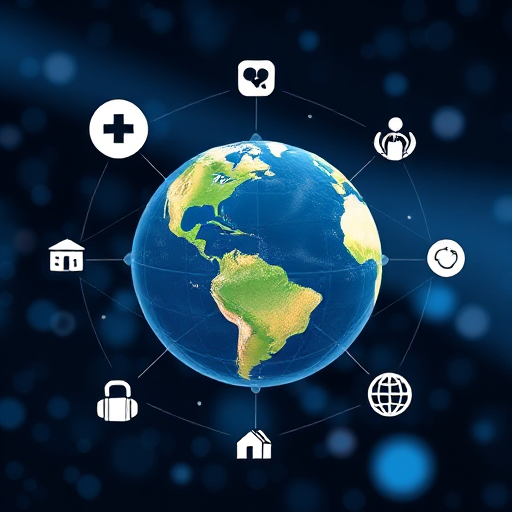Artificial Intelligence (AI) has transitioned from a niche field to a transformative force across various industries. Beyond commercial applications, AI is increasingly being leveraged to address pressing global challenges. This article examines real-world examples of how AI is contributing to social good in healthcare, education, environmental conservation, and economic empowerment, backed by data and case studies.
Combating Disease with AI
Early Disease Detection
AI’s ability to analyze vast amounts of data swiftly makes it a powerful tool in medical diagnostics. For instance, Google’s DeepMind developed an AI system capable of detecting over 50 eye diseases with 94% accuracy, matching world-leading experts in ophthalmology. This technology has the potential to prevent blindness in millions of patients by facilitating early detection and treatment.
Case Study: AI in Radiology
In a study published in Nature in 2020, researchers from Google Health developed an AI model to detect breast cancer in mammograms. The AI reduced false positives by 5.7% in the U.S. and 1.2% in the U.K., and false negatives by 9.4% and 2.7%, respectively. These improvements could significantly enhance diagnostic accuracy and patient outcomes in breast cancer screening programs.
Predicting Disease Outbreaks
Canadian startup BlueDot utilized AI algorithms to analyze a myriad of data sources, including airline ticketing and news reports, to predict the outbreak of COVID-19. The system identified the emerging risk nine days before the World Health Organization released its first warning. Early detection allows for timely interventions, potentially saving lives and resources.
Enhancing Education Accessibility
Personalized Learning Experiences
AI-driven adaptive learning platforms adjust educational content based on individual student performance. Carnegie Learning’s Mika software, for example, provides personalized tutoring in college-level math courses. A study showed that students using Mika achieved a 17% higher pass rate compared to traditional instruction methods.
AI Tutors in Underprivileged Areas
In regions with limited access to quality education, AI-powered mobile apps offer alternative learning avenues. The “One Billion” project in Africa uses AI to teach literacy and numeracy to children without formal schooling. Preliminary results indicate significant improvements in learning outcomes, demonstrating AI’s potential to bridge educational gaps.
Language Learning Applications
Duolingo, a popular language-learning platform, employs AI to tailor lessons to users’ proficiency levels. With over 500 million users worldwide, the app’s AI algorithms analyze user data to optimize learning paths, contributing to increased engagement and retention rates.
Environmental Conservation through AI
Climate Modeling and Prediction
AI enhances the precision of climate models by processing complex environmental data. IBM’s Green Horizon Project utilizes AI to forecast air pollution levels, enabling cities like Beijing to reduce harmful emissions proactively. The project contributed to a reported 20% reduction in particulate matter over a year.
Monitoring Deforestation
Global Forest Watch employs AI algorithms to analyze satellite imagery, providing real-time data on deforestation activities. Between 2001 and 2020, the platform helped identify the loss of 411 million hectares of tree cover globally. This information is critical for governments and organizations working to combat illegal logging and protect ecosystems.
Combating Illegal Fishing
Organizations like Global Fishing Watch use AI to monitor maritime activities. By analyzing data from ship transponders, AI systems identify suspicious behaviors indicative of illegal fishing. This technology has assisted authorities in reducing illegal fishing activities by providing actionable intelligence.
AI and Economic Empowerment
Financial Inclusion
AI enables financial institutions to offer services to unbanked populations by assessing credit risk using alternative data sources. Tala, a fintech company, uses AI algorithms to evaluate loan applicants based on smartphone data. With over $2 billion in loans disbursed to more than 6 million customers across Kenya, the Philippines, Mexico, and India, Tala has significantly improved access to credit in underserved markets.
Precision Agriculture
AI-driven solutions assist farmers in optimizing crop yields while minimizing resource use. The John Deere company developed See & Spray technology, which uses AI to identify weeds and apply herbicides only where necessary. Field trials demonstrated a reduction in herbicide use by up to 90%, lowering costs and environmental impact.
Enhancing Market Access
Startups like FarmBeat use AI to provide farmers with data on soil health, weather forecasts, and market prices. In India, farmers utilizing these insights reported a 30% increase in crop yields and a 20% reduction in input costs, leading to improved livelihoods and food security.
Ethical Considerations
While AI offers substantial benefits, it also presents challenges that require careful management:
- Data Privacy: The collection and use of personal data necessitate robust privacy protections to prevent misuse.
- Algorithmic Bias: AI systems can perpetuate existing biases if trained on unrepresentative data, leading to unfair outcomes.
- Transparency and Accountability: Clear guidelines and regulations are essential to ensure AI systems are developed and deployed responsibly.
Organizations like the Partnership on AI and the AI Ethics Initiative advocate for ethical standards in AI development, emphasizing the importance of fairness, accountability, and transparency.
Conclusion
AI’s application in tackling global challenges demonstrates its potential as a catalyst for social good. From improving healthcare diagnostics and expanding educational access to conserving the environment and empowering economically disadvantaged communities, AI technologies offer tangible benefits backed by real-world data. However, realizing this potential requires a concerted effort to address ethical considerations and ensure equitable access to AI’s advantages
